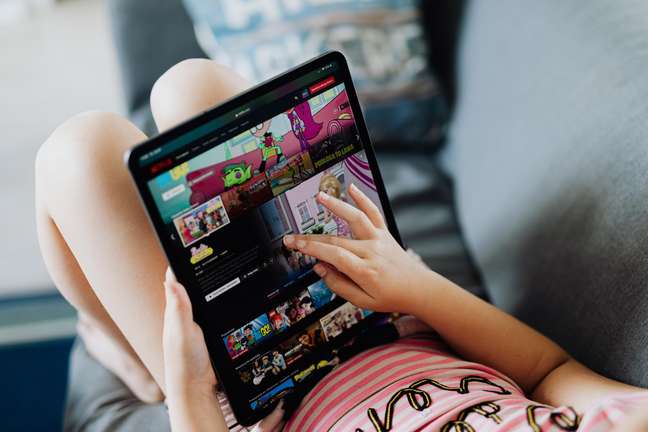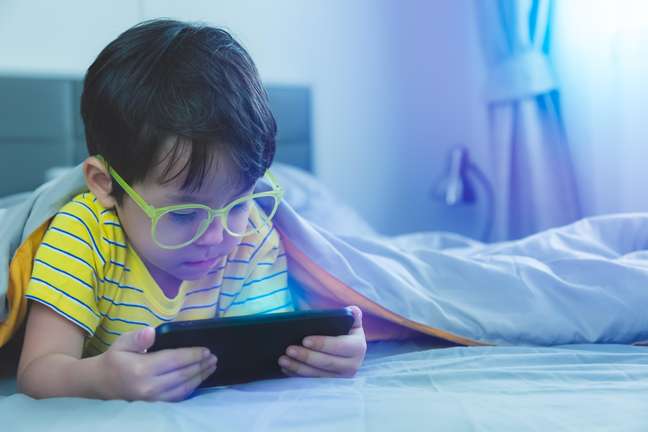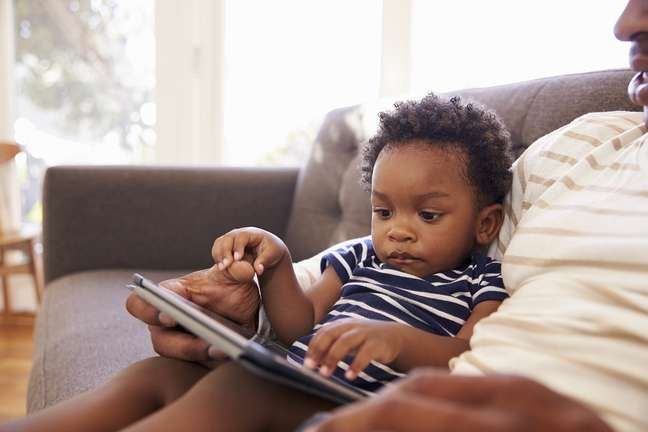While this type of activity doesn’t have to overlap with others, where the child has more interaction, there are ways to enjoy it in a positive way.
Getting the kids away from their TV, tablet or cell phone has been a growing challenge. One video starts after another, then another and then a third, all based on the content your child has seen before. That is, they are programs that attract his interest, chosen by an algorithm that goes beyond intelligence. But everyone knows that leaving children using screens for a long time is associated with various damage to development and even health – it can be a risk factor for obesity, for example. However, today, the presence and even the importance of screens in our life cannot be ignored. How to balance and transform the time in front of the screen into a moment of quality?

A meta-analysis of previous studies that evaluated the effects of the relationship between children and screens has recently shown this this interaction can also be positive, provided that some basic precautions are observed. Led by a team from the University of Portsmouth, England, the research highlighted a major difference in children who are exposed to screens with positive impact: the presence of the father or mother, who consume that content – which must have quality – with her.
“There is no effective interaction with the screens, even if the content or game is considered interactive. Interaction implies exchange and, in order to have an exchange, it is necessary to take into account the expressions, reactions and manifestations of the subjects involved. The screen itself does not offer this possibility, although some developers work in this direction, “explains psychologist Patricia Grinfeld, founder and founding partner of Não Cresce Sozinho, a mental health care platform focused on early childhood and parenting.
In fact, in these cases, it is not the screen itself that provides income to the child, but the fact that it functions as a privileged medium for dialogue, play or inquiry, for example. “The father, the mother or the person who takes care of the child is much more than being in company; it is being present with” body and soul. ” the game provokes in the child, it is to explain what happens on the screens, it is establish exchanges. The child needs an adult who introduces him to the world and who signifies the experiences he establishes with the world. Therefore, the younger the child, the more this presence is needed “the expert points out.
The effect of this type of experience for the child will be very different from being there, alone, consuming any content, while the parents take care of other tasks. But we know, of course, that this also happens. And that’s okay, as long as it’s not too much. “Screens limit experiences to the extent that there is a certain bodily passivity and the dominance of only two senses, sight and hearing. For the child to develop, there must be more diversity,” explains Patricia. When your child plays freely, away from the screens, he is active, he uses his body and all his senses., it needs to resolve conflicts and limitations, as well as manage frustrations. “The challenges and solutions he finds are much more diverse and complex and this is crucial for development,” he says.

Is there an ideal time on the screen?
To make your child’s relationship with screens more positive, another point that cannot be overlooked is the quantity. Just because you’ve chosen quality content and spend some of that time together doesn’t mean you can spend unlimited hours on this type of business. According to the guidelines of the Brazilian Society of Pediatrics (SBP) and the World Health Organization (WHO), children up to 2 years of age should not be exposed to screens; children between 2 and 5 years old can have a maximum of one hour per day; and, for children aged 6 to 10, the recommended limit is between one and two hours.
However, sticking to the clock is not enough. You must observe your child’s behavior and the distribution of his activities throughout the day. “Evaluate what the child has been doing beyond the screens and for how long,” suggests Patricia. “The time to play freely, to be with other people or even to do nothing can never be less than the time on the screens,” she points out.
“The child who overuses these digital assets begins to lose (or not even create) interest in what is off the screen, be it people or things. She opposes, throws a tantrum, quarrels when she is called upon to carry out other activities“, explains the specialist. There are still other impacts on behavior: the child becomes more passive, dependent on the action of others, he becomes more irritable and begins to have difficulty with sleep, among others. “The only way to reverse this situation is to reduce the use of screens, offering the child more human presence, interaction, exchange,” she guides.

Content matters, yes!
What your child watches or what kind of games they play makes a difference in the impact screens will have on their development, behavior or health. Sure, there has to be an age filter, with products suitable for every age group, but this is far from the only filter. In addition to observing the quality, Patricia recommends it families favor content that acts as a stimulus for other activities, which go beyond the screen. “A construction game, for example, can serve as inspiration for building blocks or other materials. A musical content can inspire you to sing, dance or want to explore a musical instrument,” he exemplifies.
And that story that educational games are good for because they promote reasoning and cognitive development? True, yes, but like any other childhood skill, these learnings don’t happen in isolation. The little ones need other stimuli, obtained above all in games and experiences that happen offline. “In a virtual puzzle game, the child does not face the motor challenge of matching the pieces, as they fit together by clicking and tapping. It is the app that adapts to the piece or not according to the choice of the child. In the physical puzzle, in addition to the child who thinks about where the piece fits, just like in the app, he he feels the texture of the material and makes use of fine motor skillsnecessary, for example, to tie a lace and, consequently, have autonomy with respect to shoes “, explains the psychologist.
In today’s world, you can’t see screens as bad because children are born in a digital world. But you can’t expect them to work as a solution either. If used in the right way and with limits, they can be support tools, in a wider context, of discovery and offline play.
+The best content in your email for free. Choose your favorite Earth Newsletter. Click here!
Source: Terra
Benjamin Smith is a fashion journalist and author at Gossipify, known for his coverage of the latest fashion trends and industry insights. He writes about clothing, shoes, accessories, and runway shows, providing in-depth analysis and unique perspectives. He’s respected for his ability to spot emerging designers and trends, and for providing practical fashion advice to readers.







